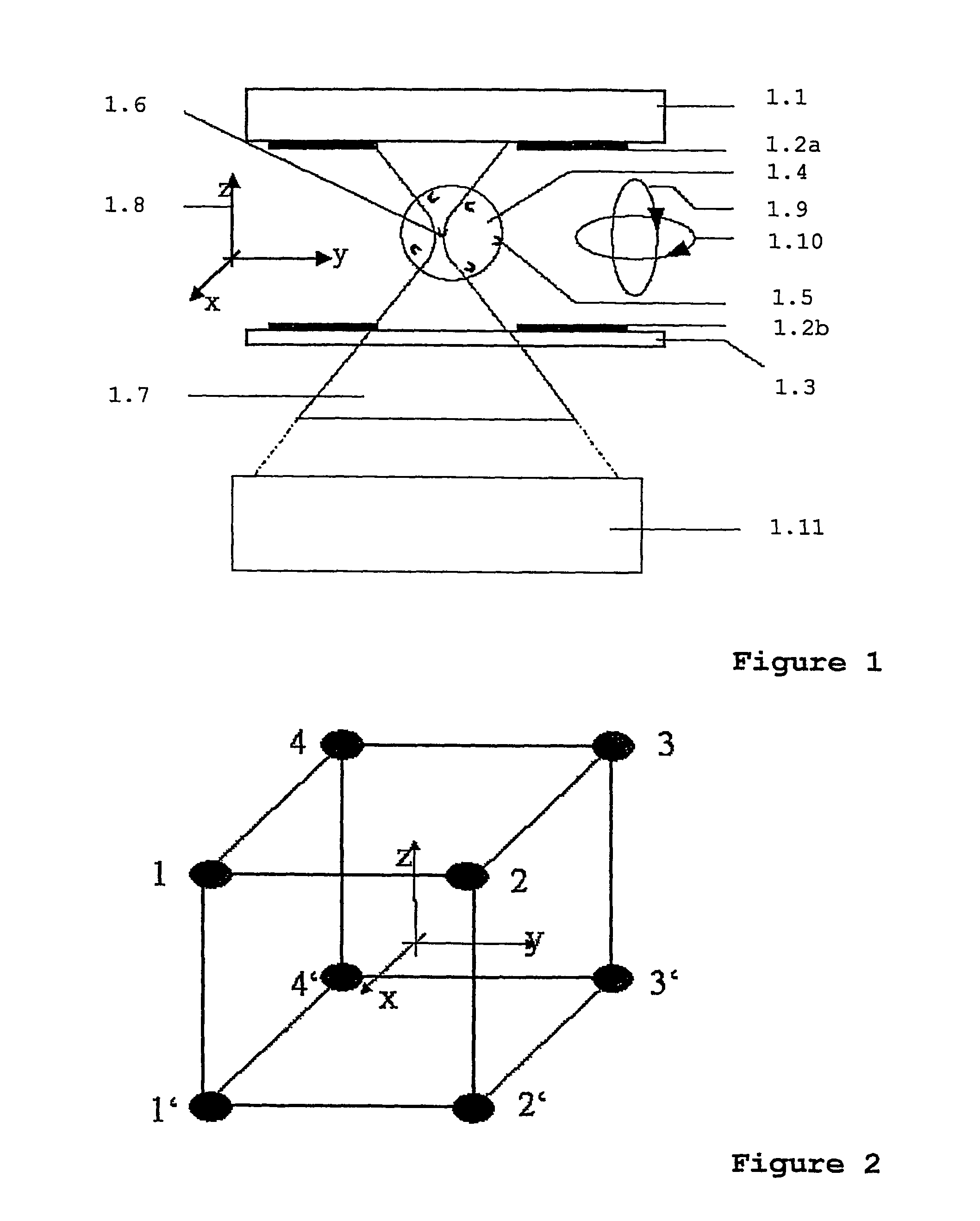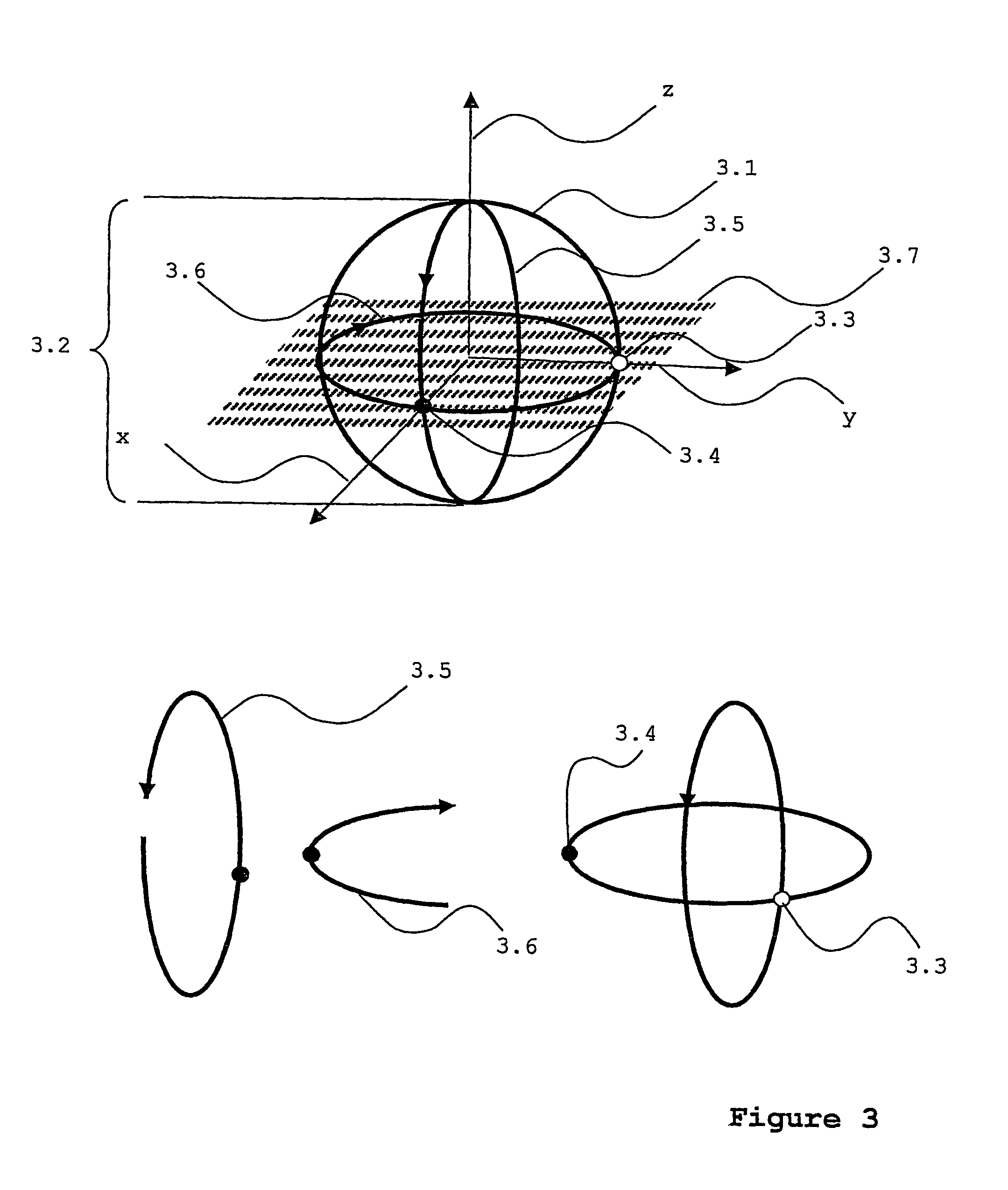Method and device for 3 dimensional imaging of suspended micro-objects providing high-resolution microscopy
a technology of high-resolution microscopy and micro-objects, which is applied in the direction of microscopes, optical elements, instruments, etc., can solve the problems of physical limitations of light collection through glass lenses of any objective, limitations due to spatial resolution of images, and the inability to render three-dimensional maps of fluorescent signals from micro objects visualized by light microscopy. , to achieve the effect of reducing the calculation effort, reducing the loss of resolution, and optimal optical
- Summary
- Abstract
- Description
- Claims
- Application Information
AI Technical Summary
Benefits of technology
Problems solved by technology
Method used
Image
Examples
examples
Imaging Experiments Performed with a Prototypic Set-Up Based on the Invention
—A—Visualization of the Lamin Structure of HeLa Cells
[0068]As an example for studying a cellular protein by live three-dimensional microscopy fluorescent nuclear lamin proteins inside a live suspended cell were imaged using a prototype of the invention.
[0069]Lamins are the major components of the nuclear lamina, a two-dimensional filamentous network at the periphery of the nucleus in higher eukaryotes, directly underlying the inner nuclear membrane. In the course of cell-cycle-dependent dynamics of the nucleus in higher eukaryotes, lamins as well as lamin-binding proteins seem to possess important functions during various steps of post-mitotic nuclear reassembly and seem to play a role in various pathological processes in muscle (Emery-Dreifuss muscular dystrophy, EDMD; dilated cardiomyopathy and conduction system defect, DCM-CD; and limb-girdle muscular dystrophy, LGMD) and adipose tissue (Dunnigan-type fa...
PUM
| Property | Measurement | Unit |
|---|---|---|
| angle | aaaaa | aaaaa |
| distance | aaaaa | aaaaa |
| size | aaaaa | aaaaa |
Abstract
Description
Claims
Application Information
 Login to View More
Login to View More - R&D
- Intellectual Property
- Life Sciences
- Materials
- Tech Scout
- Unparalleled Data Quality
- Higher Quality Content
- 60% Fewer Hallucinations
Browse by: Latest US Patents, China's latest patents, Technical Efficacy Thesaurus, Application Domain, Technology Topic, Popular Technical Reports.
© 2025 PatSnap. All rights reserved.Legal|Privacy policy|Modern Slavery Act Transparency Statement|Sitemap|About US| Contact US: help@patsnap.com



